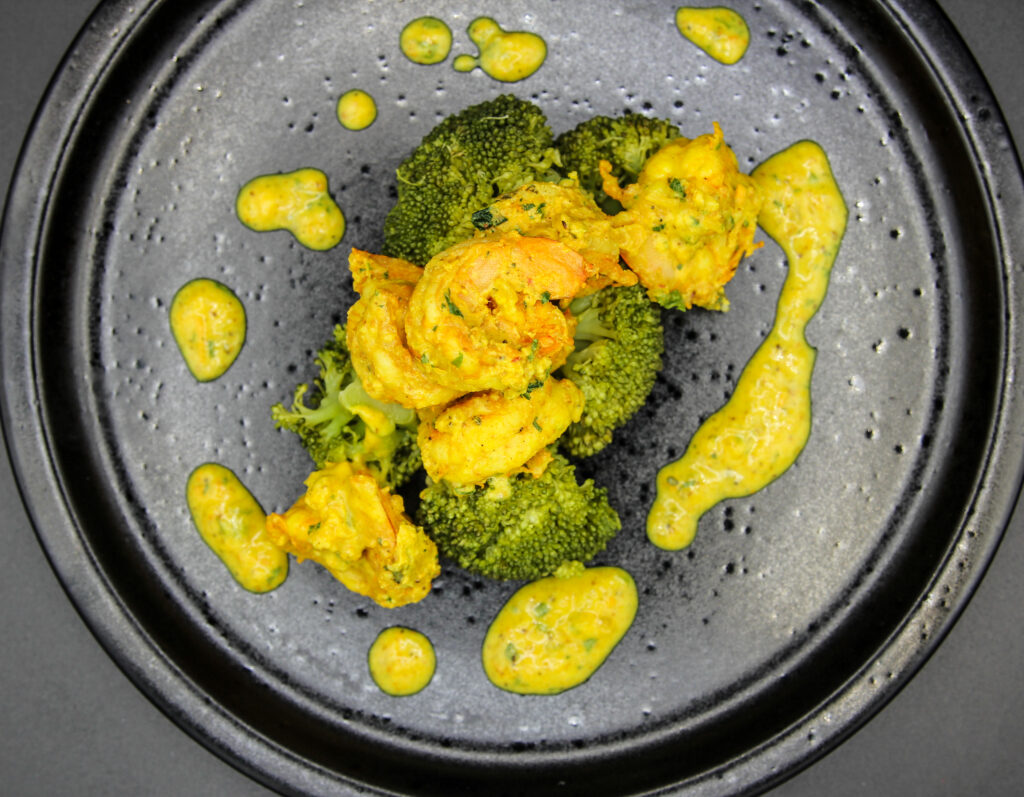
Broccoli quid pro quo: monitor heat, add crushed mustard seed, and good things will happen. This recipe maximizes the sulforaphane generated from broccoli so that you can enjoy the maximum health benefits along with the great taste.
What can broccoli do for me?
There is no doubt that you’ve heard how great broccoli is for you. Why is it so great? It’s the sulforaphane.
Sulforaphane is a powerful phytochemical molecule found in broccoli and similar cruciferous vegetables. Sulforaphane is a protective agent for our bodies. It defends against certain diseases and reduces inflammation which protects against chronic and infectious diseases. For sulforaphane to be activated, it requires a precursor called “glucoraphanin.”
Fortunately, vegetables like broccoli contain glucoraphanin. When we consume these vegetables, glucoraphanin interacts with an enzyme named “myrosinase.” This interaction is a chemical transformation, turning glucoraphanin into beneficial sulforaphane.
However, there’s a crucial detail to note. Excessive cooking can deactivate myrosinase due to its heat sensitivity. To maximize the benefits of these vegetables, consider the cooking duration and method.1
So, now what?
Don’t boil or blanch your broccoli. Boiling deactivates myrosinase, causing glucoraphanin to leach into water and reducing its effectiveness.
Stick with fresh broccoli heads. Packaged frozen broccoli lacks the ability to form sulforaphane alone.
There are three paths you can take to produce the most sulforaphane. The first is steam. If you steam, steam only for 5 minutes. I find that 4 minutes gives me a desired result, especially if I am planning on reheating. Steaming for 1-3 minutes is ideal. Over 7 minutes inactivates the myrosinase which causes broccoli to lose its magic.2 The second method is the microwave. Microwave at a high power, 900-watts for 3 minutes. I’m not crazy about the texture that results from this method, but if I’m in a pinch for time, this will do. The best cooking temperature overall is around 60C or 140F.3 The third and my favorite method is the sous vide method. (The kitchen dorks out there know what I’m talking about.) The resulting broccoli is a little underdone for my taste. But, if I’m planning on reheating this in the future, this is not a problem. Optimal conditions for myrosinase activity are 57C or 135F for 13 minutes.4
Adding myrosinase from other cruciferous plants can recover lost myrosinase during cooking. So, for added insurance and the greatest sulforaphane production, grind mustard seeds.1

Shrimp Curry with crushed Mustard Seed and Broccoli
Ingredients and Recipe Steps
This recipe is multifunctional! It provides a source of bioavailable sulforaphane, and this recipe can be used in the elimination stage of the autoimmune protocol diet. If you are in the reintroduction phase, add some chilis for a great anti-inflammatory dish. Servings are between 4 to 6.
- 2 pounds shrimp, peeled and deveined, medium size (about 26/30)
- 1 teaspoon turmeric
- pinch sea salt
- 1 medium yellow onion, 8-10 ounces, diced finely
- fresh ginger, 1 inch knob, peeled and grated, about a Tablespoon
- 3 cloves garlic
- 2 Tablespoons ghee or avocado oil
- 1 teaspoon mustard seeds
- 4 green cardamon pods
- 1 cinnamon stick
- 2 whole cloves
- 2 bay leaves
- 1 can (400 mL) coconut milk, unsweetened
- 2 Tablespoons each of freshly chopped cilantro and parsley
- 2 crowns fresh broccoli
- Salt and pepper to taste
- Marinate the Shrimp: In a bowl, combine the shrimp with the turmeric and a pinch of sea salt. Mix well, ensuring the shrimp are evenly coated. Set aside for about 10-15 minutes.
- Sauté Aromatics: In a large pan or skillet, heat the ghee or avocado oil over medium heat. Once hot, add the mustard seeds. As they begin to pop, add the chopped onion, grated ginger, and minced garlic. Sauté until the onions become translucent, about 5 minutes.
- Spice It Up: Add the cardamom pods, cinnamon stick, cloves, and bay leaves to the skillet. Continue to sauté for another 2 minutes, allowing the spices to release their aromas.
- Add Broccoli: Incorporate the broccoli florets, stirring occasionally, and cook for about 5 minutes, until they start to soften.
- Shrimp and Coconut Milk: Add the marinated shrimp to the skillet. Pour in the coconut milk, gently mixing to ensure the shrimp are submerged. Allow the mixture to come to a gentle simmer.
- Cook: Let the curry simmer for about 5 minutes, or until the shrimp turn pink and are fully cooked. Do not overcook, as shrimp can become rubbery.
- Final Touches: Season with salt and pepper to taste. Remove the cinnamon stick, cloves, bay leaves, and cardamom pods (or remind diners to set them aside while eating).
- Serve: Transfer the curry to serving bowls, garnishing with freshly chopped cilantro and parsley.
If you were to divide this into 6 servings, each serving would roughly contain:
- Calories: 365
- Protein: 35 grams
- Fat: 18 grams
- Carbohydrates: 14 grams
Sources:
1 Wu Yuanfeng, Lv Chengzhi, Zou Ligen, Sun Juan, Song Xinjie, Zhang Yao, Mao Jianwei, Approaches for enhancing the stability and formation of sulforaphane, Food Chemistry, Volume 345, 2021, 128771, ISSN 0308-8146, https://doi.org/10.1016/j.foodchem.2020.128771.
(https://www.sciencedirect.com/science/article/pii/S0308814620326339)
2 Jing Sun, Yunfan Wang, Xinyi Pang, Shuhua Tian, Qiaobin Hu, Xiangfei Li, Jie Liu, Jing Wang, Yingjian Lu,
The effect of processing and cooking on glucoraphanin and sulforaphane in brassica vegetables,
Food Chemistry, Volume 360, 2021, 130007, ISSN 0308-8146, https://doi.org/10.1016/j.foodchem.2021.130007.
(https://www.sciencedirect.com/science/article/pii/S030881462101013X)
3 Lu Y, Pang X, Yang T. Microwave cooking increases sulforaphane level in broccoli. Food Science & Nutrition. 2020 Apr;8(4):2052-2058. DOI: 10.1002/fsn3.1493. PMID: 32328271; PMCID: PMC7174218.
4 Carmen Pérez, Herna Barrientos, Juan Román, Andrea Mahn, Optimization of a blanching step to maximize sulforaphane synthesis in broccoli florets, Food Chemistry, Volume 145, 2014, Pages 264-271, ISSN 0308-8146, https://doi.org/10.1016/j.foodchem.2013.08.053.
(https://www.sciencedirect.com/science/article/pii/S0308814613011345)